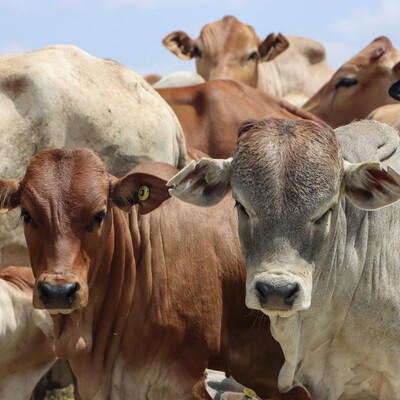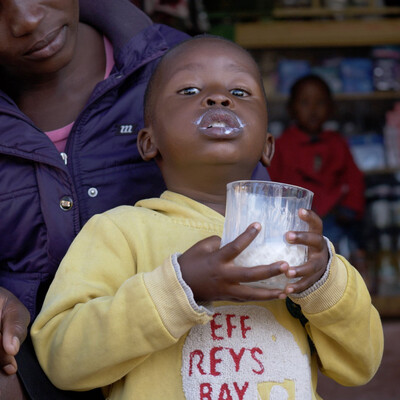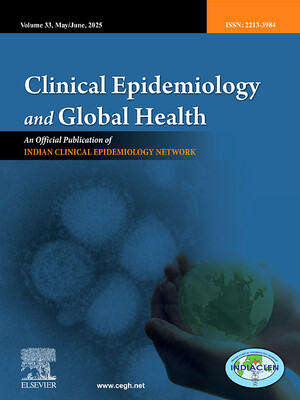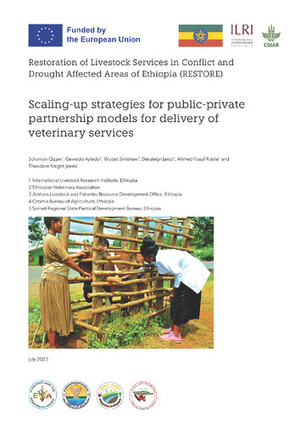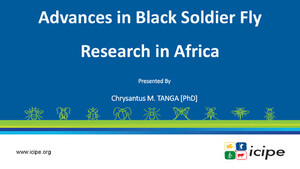
Connections between livestock, biosecurity and climate change: Challenges and Opportunities of strengthening Africa's disease preparedness and response capacities
On 20 January 2022, ILRI co-hosted Day two of their One Health and Biosecurity webinar along with the African Union Development Agency (AUDA-NEPAD) and the Alliance for Pandemic Preparedness and Response (APAR). The webinar focused on the challenges and opportunities of strengthening Africa’s disease preparedness and response capacities in the context of One Health.
The second day began with a session titled ‘Livestock, biosecurity and climate change’, moderated by ILRI’s deputy director general of biosciences Dieter Schillinger. Schillinger began by introducing the term ‘One Biosecurity’, describing it as an ‘interdisciplinary approach to biosecurity policy and research that builds on the interconnections between human, animal and environmental health to effectively prevent and mitigate the impact of invasive alien species’. This interdisciplinary and holistic approach is essential to addressing the major threats to global biosecurity, including urbanization, climate change and human global mobility. Schillinger then introduced ILRI scientist and sustainable livestock systems program leader Polly Ericksen.
In conjunction with other drivers such as agricultural intensification and land-use change, climate change is very much upon us’, said Ericksen. These environmental changes are likely to impact global livestock systems and biosecurity significantly.
As evidence of this, Ericksen presented research from ILRI scientist Philip Thornton which projects a rapid increase in the number of days of ‘extreme heat stress’ per year over the coming decades. Thornton’s research suggests that many areas of the world currently suitable for livestock production will not be for much longer unless we take urgent action to combat the climate crisis. Ericksen also pointed to research connecting climate impacts and land-use changes to increase the potential for ‘novel viral sharing events’. The potential for these disease sharing events is especially high in human population centres, where people are living in increasingly close contact with livestock and wildlife.
By highlighting the intricate connections between climate change, livestock systems and disease transmission, Ericksen confirmed the need to develop interdisciplinary solutions to the complex and interconnected problems we face.
Next to speak was Michel Dione, a senior animal health scientist at ILRI. Dione began by confirming that ‘climate is changing, population is increasing, land is decreasing and animals are getting closer to people’. These environmental changes make it more likely for new diseases to emerge and existing diseases to re-emerge, so Dione urged countries to adapt their disease surveillance strategies to account for these environmental factors.
Unfortunately, a lack of data poses a major barrier to effective disease surveillance in many developing countries. Improving access to data would allow policymakers to better prioritize disease surveillance strategies based on the local or regional context. ‘If we want to attack these diseases, we will need improved data and resources’, said Dione.
Dione also discussed the importance of livestock value chain actors in preventing disease outbreaks. Smallholders often lack knowledge about emerging diseases, so ‘we need to raise awareness and knowledge about disease reduction’, said Dione. This includes providing farmers with the resources they need to invest in disease prevention and preparedness strategies.
Dione concluded his remarks with an encouraging note on the COVID-19 pandemic, calling it ‘a great opportunity’ to push the biosecurity agenda forward and improve disease surveillance in the developing world.
The session’s final speaker was Wanda Markotter, director of the University of Pretoria’s Centre for Viral Zoonoses. Markotter built on Dione’s comments surrounding the need for improved data, adding that data must also be shared more widely to help create a global prevention system. To gather the necessary data, Markotter advocated for increased collaboration with local communities that can provide an in-depth view of the situation on the ground. Markotter concluded the session by highlighting one of the webinar’s central themes—the need to ‘focus more on disease prevention, not just preparedness’. To Markotter, effective disease prevention requires us to pay closer attention to the ecosystem changes and climate impacts threatening global biosecurity. This will help us ‘prevent future pandemics and ensure healthier lives not just for humans, but also for animals and ecosystems’, said Markotter.
For more information visit:
Alliance for Pandemic Preparedness and Response
Tan Lac district, Hoa Binh province, Vietnam (photo credit: ILRI/Vu Ngoc Dung).







